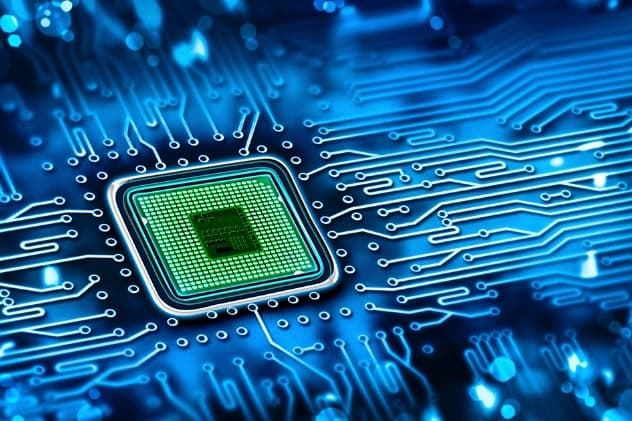Electron-Phonon Interaction Have Key Role In Overheating of Electronic Devices: MIT Research Suggest
Researchers at MIT, recently proposed that electron-phonon interaction could stand out as an important reason behind overheating of microelectronic devices. They carried out a series of experiments which led them to this conclusion. With the Moore’s Law as the reference, every year a silicon wafer manages to have twice the capacity of transistors it used to have before. This led to increase in the overheating effect of micro-circuits causing a trade-off between performance and form factor. Studying the effects of electron-phonon interaction could soon help them in minimizing this effect and increase the performance keeping the form factor flexible.

Phonon Scattering Causes Overheating Of MicroElectronic Devices Leading To Reduction In Performance
Phonons are the quanta of energy which results from the vibration of the crystal lattice. They are the heat carriers which draws out the generated thermal energy and prevents overheating. Interaction of electron with the phonon causes restriction in the flow of electrons. This not only generates heat but causes phonons to scatter and reduce the sinking effect. Previously, electron-phonon interaction were assumed to be as an under-rated factor behind overheating of electronic devices. But now, it stands out as the key reason. The finding has recently been published in the Journal, Nature Communications and is expected to have many applications, especially in the thermoelectric generators.
Thermoelectric generators uses the heat generated within the system to produce electric charge. Scattering of phonons and effective preservation of heat inside the system could be the key behind fabrication of such devices. It has been noticed that increasing the concentration of electrons in the silicon wafer causes increase in the rate of scattering of phonons. They implemented a method named, three pulse photoacoustic spectroscopy which varied the concentration of electrons through the wafer measuring the effect on phonons at the same time. It was found that the scattering effect continued to increase by 50% as the concentration varied from 10^19 to 10^21 per cubic centimeter.
Researchers believe that as the form factor of wafer goes on decreasing year after year, the effect of electron-phonon interaction will significantly come into play. They are trying to not only control the interaction but also to use it to further improve the design of thermoelectric devices. This will lead to fabricate much smaller silicon wafers in the scale of nanometers with more micro electronic devices leading to the manufacture of devices with better performance in lesser form-factor.
Source - <a href="https://news.mit.edu/2016/electron-phonon-interactions-affect-heat-dissipation-computer-chips-1012" target="_blank" rel="nofollow noopener noreferrer">Electron-phonon interactions affect heat dissipation in computer chips | MIT News | Massachusetts Institute of Technology</a>

Phonon Scattering Causes Overheating Of MicroElectronic Devices Leading To Reduction In Performance
Phonons are the quanta of energy which results from the vibration of the crystal lattice. They are the heat carriers which draws out the generated thermal energy and prevents overheating. Interaction of electron with the phonon causes restriction in the flow of electrons. This not only generates heat but causes phonons to scatter and reduce the sinking effect. Previously, electron-phonon interaction were assumed to be as an under-rated factor behind overheating of electronic devices. But now, it stands out as the key reason. The finding has recently been published in the Journal, Nature Communications and is expected to have many applications, especially in the thermoelectric generators.
Thermoelectric generators uses the heat generated within the system to produce electric charge. Scattering of phonons and effective preservation of heat inside the system could be the key behind fabrication of such devices. It has been noticed that increasing the concentration of electrons in the silicon wafer causes increase in the rate of scattering of phonons. They implemented a method named, three pulse photoacoustic spectroscopy which varied the concentration of electrons through the wafer measuring the effect on phonons at the same time. It was found that the scattering effect continued to increase by 50% as the concentration varied from 10^19 to 10^21 per cubic centimeter.
Researchers believe that as the form factor of wafer goes on decreasing year after year, the effect of electron-phonon interaction will significantly come into play. They are trying to not only control the interaction but also to use it to further improve the design of thermoelectric devices. This will lead to fabricate much smaller silicon wafers in the scale of nanometers with more micro electronic devices leading to the manufacture of devices with better performance in lesser form-factor.
Source - <a href="https://news.mit.edu/2016/electron-phonon-interactions-affect-heat-dissipation-computer-chips-1012" target="_blank" rel="nofollow noopener noreferrer">Electron-phonon interactions affect heat dissipation in computer chips | MIT News | Massachusetts Institute of Technology</a>
0
